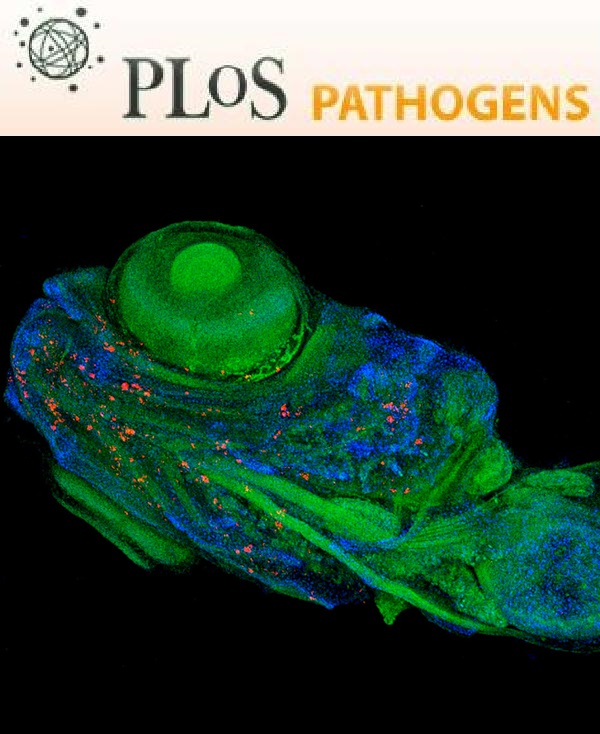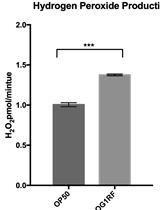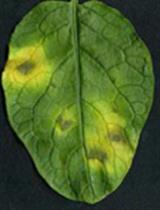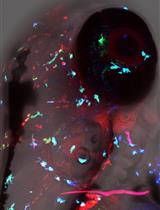- EN - English
- CN - 中文
Staphylococcus aureus Killing Assay of Caenorhabditis elegans
金黄色葡萄球菌对秀丽隐杆线虫的杀伤性分析
发布: 2013年10月05日第3卷第19期 DOI: 10.21769/BioProtoc.916 浏览次数: 13929
Abstract
The Gram-positive bacterium Staphylococcus aureus is a human pathogen that displays virulence towards the nematode Caenorhabditis elegans. This property can be used to discover genes that are important for virulence in humans, because S. aureus possesses common virulence factors that are used in C. elegans and in humans to cause disease. S. aureus colonizes the C. elegans intestine, establishes an infection, and causes pathogenesis of the intestinal epithelium that ultimately kills the infected animal after 3 to 4 days (Sifri et al., 2003; Irazoqui et al., 2008; Irazoqui et al., 2010). The protocol described here is used to establish the rate of S. aureus-induced C. elegans death, which allows the comparison of wild type and mutant strains and thus ultimately aids in the identification of genes required either for S. aureus virulence or for C. elegans host defense. The assay can also be applied for antimicrobial drug discovery.
Materials and Reagents
- S. aureus wild type strain (e.g. the commonly-used NCTC8325 with natural Nal resistance, or its Kan-resistant derivative SH1000, Horsburgh et al., 2002) and/or any mutants of interest.
Note: S. aureus is a potential human pathogen that is classified as a Biosafety Level (BSL) 2 organism.
Please see the Center for Disease Control (CDC) resource http://www.cdc.gov/training/QuickLearns/biosafety/ for information on working under BSL2 conditions, including the use of appropriate personal protection equipment, the use of a biological safety cabinet to contain aerosols, and the autoclaving of all trash.
- E. coli strain HT115 expressing cdc-25.1 dsRNA (Ahringer Library, Kamath et al., 2000)
- E. coli strain OP50
- C. elegans wild type strain (most commonly Bristol N2) and/or any mutants of interest (available from the Caenorhabditis Genetics Center at http://www.cbs.umn.edu/cgc)
- Bacto Tryptic Soy Broth (TSB) (BD Biosciences, catalog number: 211825 )
- Difco Tryptic Soy Agar (TSA) (BD Biosciences, catalog number: 236950 )
- Luria Broth (LB) (MP Biomedicals, catalog number: 3002-021 )
- Luria Broth Agar (MP Biomedicals, catalog number: 3002-231 )
- Nalidixic acid sodium salt (Nal) (Sigma-Aldrich, catalog number: N4382 )
- Carbenicillin disodium salt (Carb) (Sigma-Aldrich, catalog number: C1389 )
- 5-fluorodeoxyuridine (FUDR) (Sigma-Aldrich, catalog number: F0503 )
- Nalidixic Acid (Nal) 1,000x stock solution (10 mg/ml) (see Recipes)
- Carbenicillin 1,000x stock solution (100 mg/ml) (see Recipes)
- TSB (see Recipes)
- LB (see Recipes)
- Large TSA + Nal (10 μg/ml) plates (see Recipes)
- Large LB + Carb (100 μg/ml) plates (see Recipes)
- Killing assay plates (see Recipes)
- Nematode growth media (NGM) plates (see Recipes)
- RNAi plates (see Recipes)
Equipment
- Dissection stereo microscope (e.g. Zeiss, model: Stemi 2000 )
- 15 °C and 25 °C C. elegans incubators (e.g. Thermo Fisher Scientific, model: 3940 )
- 37 °C bacterial incubator and shaker
- Platinum wire worm pick* and ethanol lamp (Cole-Parmer, catalog number: EW-48585-84 ) for sterile transfer of worms at dissection scope.
*Worm picks can either be purchased (e.g. Genesse Scientific, catalog number: 59-AWP ) or made in the lab. To make a pick, insert a 5 cm segment of 90% platinum/10% iridium wire (Tritech Research, catalog number: PT-9010 ) into the narrow end of a glass Pasteur pipet, melt glass over Bunsen burner flame to fasten wire inside, and flatten the tip of the protruding wire (~5 mm) into a flat “spatula”-like structure using a pair of needle-nose pliers. The handle end of the glass pipet can be inserted into foam tubing (Maddak, catalog number: F766900183 ) for more comfortable manipulation (see Figure 1).
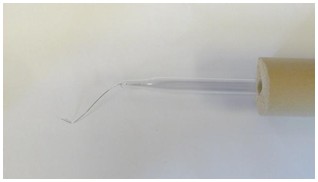
Figure 1. Example of a worm pick made in the lab. The pick consists of platinum wire inserted into a Pasteur pipet, held in foam tubing for easy handling. See text for details.
Software
- Microsoft Excel or any other spreadsheet software
- GraphPad Prism
Procedure
文章信息
版权信息
© 2013 The Authors; exclusive licensee Bio-protocol LLC.
如何引用
Readers should cite both the Bio-protocol article and the original research article where this protocol was used:
- Wollenberg, A. C., Visvikis, O., Alves, A. F. and Irazoqui, J. E. (2013). Staphylococcus aureus Killing Assay of Caenorhabditis elegans. Bio-protocol 3(19): e916. DOI: 10.21769/BioProtoc.916.
- Irazoqui, J. E., Troemel, E. R., Feinbaum, R. L., Luhachack, L. G., Cezairliyan, B. O. and Ausubel, F. M. (2010). Distinct pathogenesis and host responses during infection of C. elegans by P. aeruginosa and S. aureus. PLoS Pathog 6: e1000982.
分类
微生物学 > 微生物-宿主相互作用 > 体内实验模型 > 蠕虫
免疫学 > 宿主防御 > 综合
您对这篇实验方法有问题吗?
在此处发布您的问题,我们将邀请本文作者来回答。同时,我们会将您的问题发布到Bio-protocol Exchange,以便寻求社区成员的帮助。
Share
Bluesky
X
Copy link


